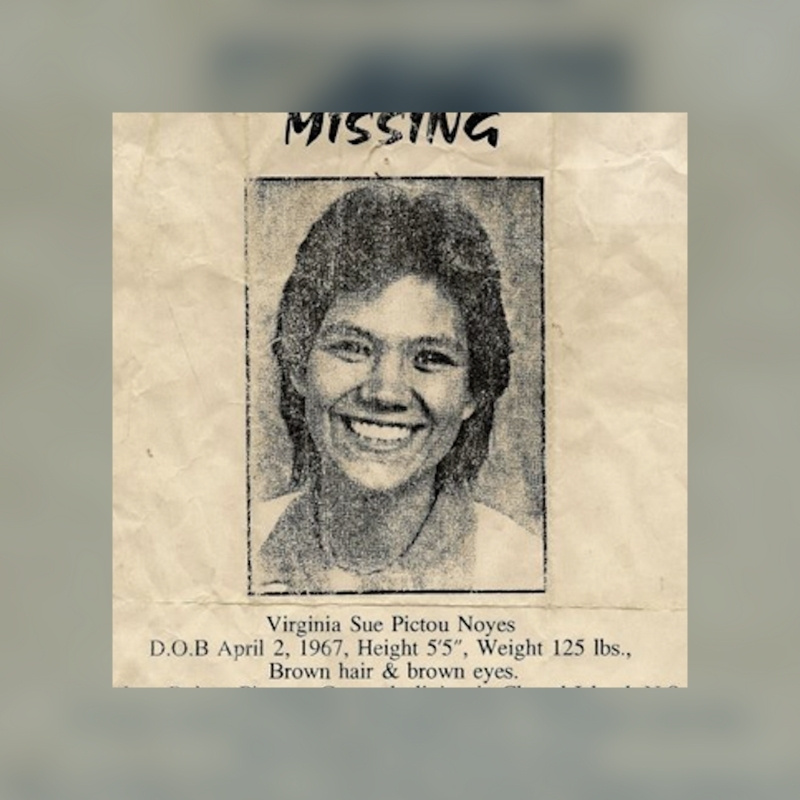Homicide is a leading cause of death of Indigenous women. Indigenous women are murdered and sexually assaulted at a rate 10 times higher than other ethnicities, with a majority of them committed by non-Native people on Native-owned land. 84% of Native women experience violence in their lifetime.
These numbers are a staggering reality for indigenous women across North America. According to a study released in 2020, a majority of homicide cases and disappearances of indigenous women in the U.S. and Canada go cold — years, decades roll by without answers for the families who mourn the loss of their daughters, sisters, mothers, aunts, and friends. The land we now call Maine is not immune to this epidemic.
This is the cold case of Virginia Sue Pictou-Noyes.
If you or someone you know needs help, call StrongHearts Native Helpline at 1-844-7NATIVE (762-8483). It is a domestic, dating and sexual violence helpline for American Indians and Alaska Natives, offering culturally-appropriate support and advocacy daily from 7 a.m. to 10 p.m. CT. The helpline is anonymous and confidential. You can also call the National Domestic Violence Hotline at 1-800-799-7233.
The Last Night
Virginia Sue sat in her hospital room at Eastern Maine Medical Center, waiting. She replayed the night’s events over again in her head as the bruise above her eye began to throb.
All at once Virginia was scared — scared for what would happen when she stepped out of the safety of the hospital. She was nervous about the paperwork she’d just completed, the report she filed, the restraining order that was now in place. The officer told her it would protect her, that he wouldn’t be able to come near her anymore… But Virginia knew it would only make him more angry. And she was worried. As she sat in her hospital room, Virginia’s five children were at home and they needed their mother.
But Virginia wouldn’t be discharged until she was seen by a doctor for a final evaluation. As she waited, Virginia’s mind raced. Getting back to the kids was her highest priority, but the logistics of that trip weren’t going to be easy. She was in Bangor, and her home was in Easton — 2 and a half hours north. Who would pick her up? Who could she call? She couldn’t get in the car with the people she came with, not after what happened.
Virginia considered her options as she took another glance at the clock on her hospital room wall. It was 1 am.
The nurses were attending to another patient — a gunshot victim who’d just arrived by ambulance. Eastern Maine Medical center was really the only option in the area for the critically injured, and it was a busy night in the trauma center.
Whatever compelled Virginia to walk out of that hospital room and onto State Street in Bangor on April 24, 1993, we may never know for sure. But without her final evaluation, without a formal discharge, without a plan to make it home, she did exactly that. That hospital room at Eastern Maine Medical Center would become the last confirmed place that Virginia Sue Pictou-Noyes was seen alive.
Episode Source Material
- An Unending Search, The Bangor Daily News, 09 Sep 1994
- National Inquiry into Missing and Murdered Indigenous Women and Girls Truth-Gathering Process – Part 1 Public Hearings
- Search for woman missing 18 years… Bangor Daily News, 09 Jan 2012
- Maine police investigate claim… by Jorge Barrera, CBC News, 29 Nov 2017
- charleyproject.org
- The Little-Known History of the Forced Sterilization of Native American Women by Jane Lawrence, JSTOR Daily
